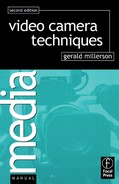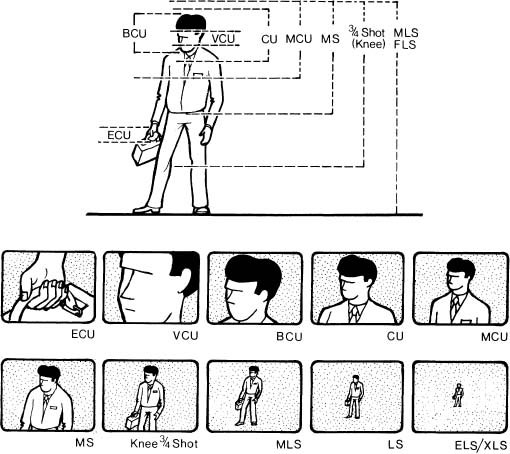Does it really matter how you compose pictures of people? Isn’t it just a matter of convention to classify the various ways in which you can shoot a person?
Over the years, a series of universally agreed ‘standard shots’ evolved in film-making. These were not simply routines, but compositions that experience has shown provide the most successful, artistically pleasing results. If you frame people in any other way, you will usually find that the effect looks awkward and unbalanced.
These easily recognized shots of people provide convenient quick reference points for all members of the production team; particularly the director and camera operator.
First of all, there are the broad directions used when describing shots –
• Frontal shot, side view, three-quarters frontal, back or rear view.
Then there is an indication of the camera’s height (actual or apparent) –
• Low shot, level shot, high shot, and even top or overhead shot.
Sometimes a general direction such as –
• ‘Over-shoulder shot’ or ‘point-of-view shot’ (POV) is sufficient indication.
For some purposes it is enough simply to indicate how many people are to be in the shot, and use the general guides –
• ‘Single shot’, ‘two shot’, ‘three shot’ or even a ‘group shot’.
The shot will be framed to just accommodate that number.
Although the basic shots are universal, unfortunately the terminology used to define them can vary from one place to the next. So for example, while one director talks about a ‘bust shot’ or a ‘chest shot’ another wants an ‘MCU’. To avoid confusion it is best to stick to those used locally.
The easiest way to remember these standard shots is by the way they are framed: e.g. ‘cutting just below the waist’, ‘just below the knees’… In no time at all, you will find yourself automatically thinking in these terms, free to concentrate on other aspects of the camerawork.
Shots are identified by how much of the subject they include:
ECU | Extreme close-up (detail shot) – isolated detail. |
VCU | Very close-up (face shot) – from mid-forehead to above chin. |
BCU | Big close-up (tight CU, full head) – full head height nearly fills the screen. |
CU | Close-up – just above head to upper chest (cuts below necktie knot). |
MCU | Medium close-up (bust shot, chest shot) – cuts body at lower chest (breast pocket, armpit). |
MS | Medium shot (mid-shot, close medium shot, CMS, waist shot) – cuts body just below waist. |
Knee, | ¾ shot Knee shot, three-quarter length shot – cuts just below knees. |
MLS | Medium long shot (full-length shot, FLS) – entire body plus short distance above/below. |
LS | Long shot – person occupies three-quarters to one-third screen height. |
ELS | Extra long shot (extreme LS, XLS). |

